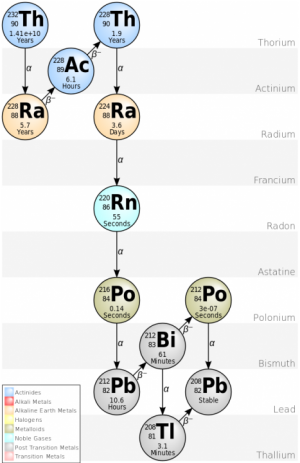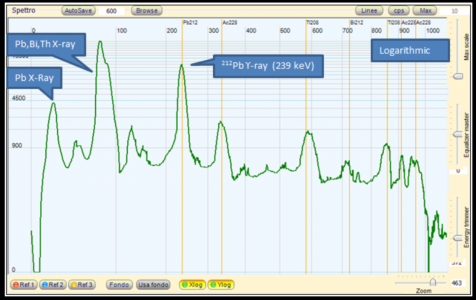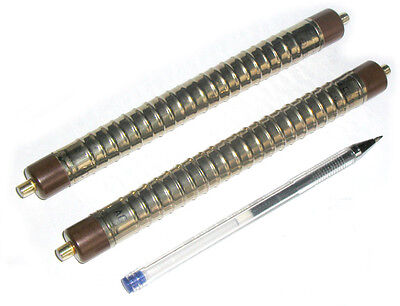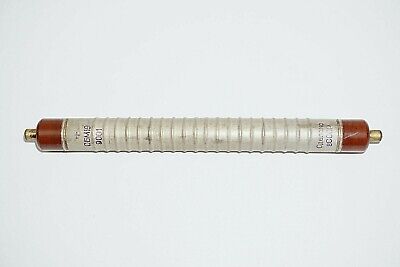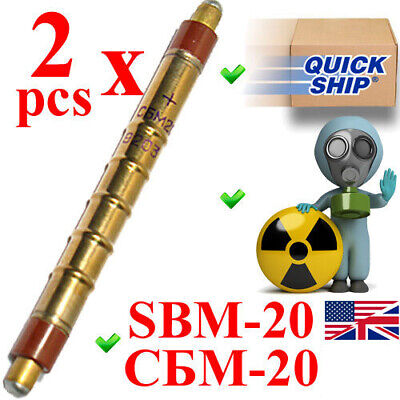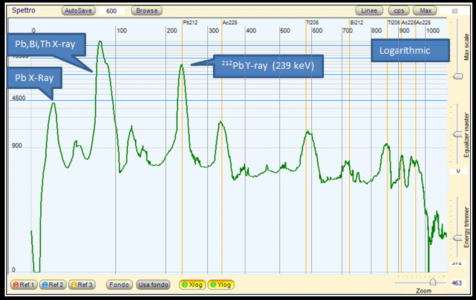- Joined
- Jul 28, 2017
- Messages
- 2,367
We can always cut down on the number of sources used. I'm going with the worst-possible count rate, after seeing what my current setup is doing. This sort of belated discovery is what a test bed is all about so I'm not at all surprised to find some flys in the soup!1/2 inch is getting right up close, but I think you are right in the approach. I did wonder if one can get "too many" pulses?
Back to your first comment, I immediately created a trouble ticket asking for .scad files to be on the allowed-to-attach list.
We are just going to have to solve whatever it takes to shape some lead. ??
The "focusing ring" doesn't need to be made out of lead. At least, I wasn't planning on it. Turn a ring out of aluminum and glue it to the lead aperture plate. Then glue down the pared-down source disks -- hot glue, silicone, epoxy, whatever. BTW, the source disks don't have be round. Cutting off chords to make a square will accomplish the desired effect, as long as the disk just fits inside it. It should be possible to do this with relatively low risk of releasing Am241 but I still would do it outside while wearing a particle mask.
The hole in the aperture plate I'm currently using wasn't all that difficult to do, but having some experience with "grabby" metals (brass, to be specific), to start the hole I used the largest drill I've got that has been dubbed so it drills brass OK. Basically the two cutting edges on the drill flutes are knocked back with a stone so they have neutral rake. That worked fine, but I did take it pretty slow, too. Then I enlarged the hole using a tapered hand reamer. Hey, some machining-related stuff! Now we're good for another 65 pages of posts
The drill modification is called Dubbing, and I did it with a 600-grit diamond stone. Those drills are kept separate so they don't get used for things like steel and aluminum.
I'm thinking that the shield ring can be made out of a sheet of lead the right thickness, by cutting a strip and rolling it into a circle. Additional messing around with my model indicates the shield ring only needs to be .180"/4.6mm high to completely shield the detector from the source gamma rays. It should be at least 1/16"/1.5mm thick, so it really will be a short tube rather than a washer. I wouldn't want to make it much thicker, else it will block some source gammas from the sample. I'd just glue it to the aperture plate, too. Gamma rays striking the bottom of the ring will still encounter the aperture plate so the ring doesn't have to sit perfectly flat on the plate.
Finally (for this post, anyway) I noticed a potential issue with the X100 detector with regard to oscillation. I was fooling around with a small sheet of copper to see if I could get some copper XRF pulses to show up and when I got the sheet very close to the detector the PocketGeiger board started oscillating. The detector is a big antenna sitting near two high-gain amplifiers, so introducing some capacitive coupling between them all got things going. If you're going to be building up your own detector front end, that's something to consider. Or if simply modifying a PocketGeiger like me.


